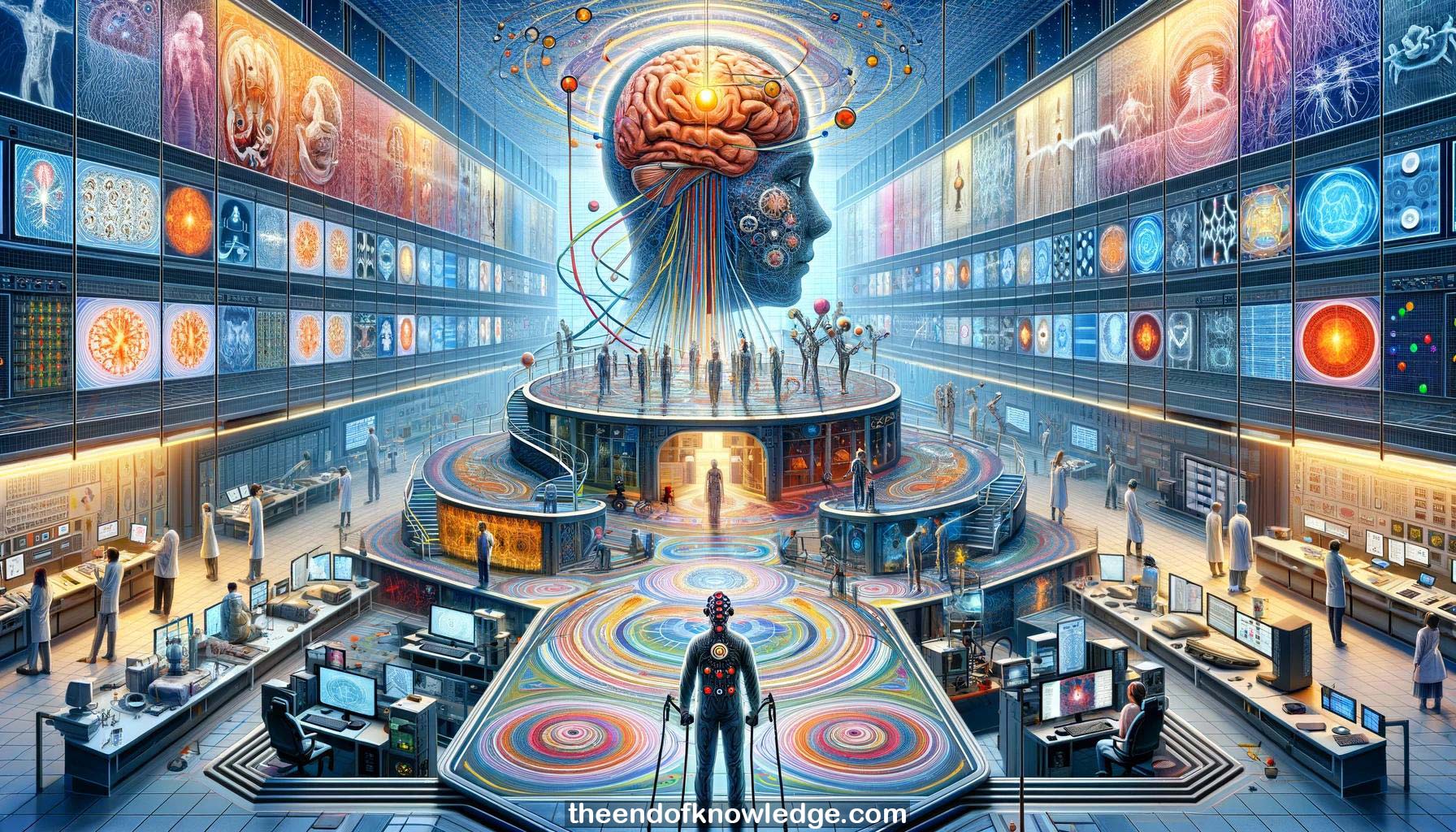 >
>
Concept Graph & Resume using Claude 3 Opus | Chat GPT4 | Llama 3:
Resume:
1.- Jack Zhang from Hong Kong Polytechnic University presented recent research using the GTAC Recovery X device and neurophysiological studies in stroke rehabilitation.
2.- Their lab has 3 components: non-invasive brain stimulation, behavior tracking, and neural modulation/neurophysiology. They use the Recovery X for BCI research.
3.- Brain-computer interfaces can be used as both assistive devices to control external machines and as therapeutic tools to improve recovery after neurological injury.
4.- In motor BCI, the user regulates brain activity related to motor execution via motor imagery to control an external device, inducing neuroplasticity.
5.- EEG is commonly used in BCI for its excellent temporal resolution, portability, and ability to assess sensorimotor rhythms related to motor imagery.
6.- Event-related desynchronization (ERD) during motor imagery represents cortical activation and is used as a key feature in many motor BCI systems.
7.- A meta-analysis found BCI-based interventions significantly improved upper limb motor outcomes compared to sham immediately post-intervention, but not at follow-up.
8.- Their pilot RCT compared BCI with FES+VR feedback, just FES, and just VR in 27 chronic stroke patients over 10 sessions.
9.- All 3 BCI interventions significantly improved upper limb function, but combining FES+VR was not superior to FES or VR alone.
10.- Motor imagery accuracy in the first BCI session correlated with motor gains, suggesting precise motor imagery is key to BCI efficacy.
11.- The capacity for motor imagery did not significantly improve, indicating the BCI training effects were specific to the trained movements.
12.- Resting-state EEG can detect abnormal brain activity patterns after stroke, such as increased low-frequency and decreased high-frequency oscillations.
13.- Movement-related ERD over the ipsilesional primary motor cortex is reduced after stroke and correlates with upper limb motor function.
14.- Mirror visual feedback during unaffected hand movement can rebalance hemispheric activity and increase contralesional ERD in stroke patients.
15.- Their cross-sectional resting-state EEG study found interhemispheric asymmetry in delta/theta (higher ipsilesionally) and beta (lower ipsilesionally) power in chronic stroke.
16.- Beta power bilaterally and delta band network properties correlated with upper limb motor function, reflecting regional and network-level reorganization post-stroke.
17.- Their task-based EEG study found greater high beta ERD over contralateral sensorimotor areas during actual and mirrored hand movement in stroke patients.
18.- Beta ERD correlated with upper limb function only in the mirror and action observation conditions, supporting mirror training relevance in stroke rehabilitation.
19.- An RCT applied excitatory theta-burst stimulation (TBS) to the ipsilesional motor cortex before robotic upper limb training in stroke patients.
20.- Real TBS improved motor function more than sham. Only the primed TBS group showed increased ERD and reduced pathological delta activity post-intervention.
21.- Baseline mirror-induced ERD predicted motor gains from the intervention, suggesting ERD could be a biomarker of brain stimulation responsiveness in stroke.
22.- Future directions include using fNIRS-based BCI to target abnormal cerebrovascular perfusion in stroke and provide neurofeedback to normalize the pathological signals.
23.- They are connecting BCI with robotic devices as an alternative output to FES and piloting this setup in stroke patients.
24.- Closed-loop integration of TMS with BCI based on individual brain states could improve the precision and efficacy of brain stimulation.
25.- Careful consideration is needed for sham BCI control conditions, as completely random feedback can be confusing and potentially train maladaptive patterns.
26.- Increasing BCI training session numbers could enhance efficacy, though an optimal dose is still unclear and shorter protocols can demonstrate proof-of-concept.
27.- Synchronizing TMS with peak negativity of the alpha oscillation may enhance cortical excitability, while stimulating at peak positivity could be inhibitory.
28.- Their lab focuses on stroke, but collaborates with physical therapy researchers investigating cardiopulmonary rehabilitation, with potential for heart-brain integrated BCI applications.
29.- The presentation covered a range of topics integrating BCI, neurophysiology, and brain stimulation to advance the mechanistic understanding and treatment of stroke.
30.- Key themes included leveraging neuroplasticity, re-balancing aberrant hemispheric asymmetries, and personalizing neuromodulation based on individual brain dynamics to optimize rehabilitation outcomes.
Knowledge Vault built byDavid Vivancos 2024